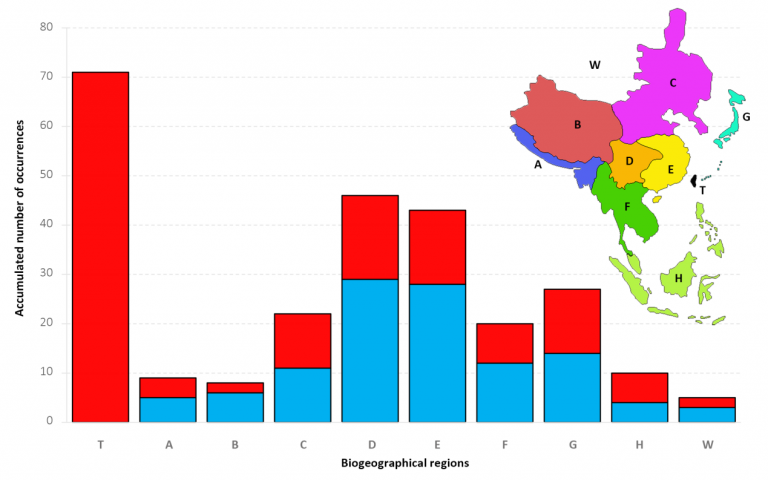文章链接://onlinelibrary.wiley.com/doi/10.1111/jbi.14705

图1 Biogeographical distributions of sister taxa of endemic seed plants in Taiwan. Red and blue indicate the distribution of sister species to endemic species with in situ speciation or dispersal origin mode, respectively. The following biogeographical regions are shown: (A) Assam, Bangladesh, Nepal, and west and east Himalayas; (B) Qinghai-Tibet Plateau and China Tethyan; (C) Chinese Holarctic, Russian Far East, and Korea; (D) south-central China, (E) southeast China and Hainan; (F) Indo-China; (G) Japan and the Ryukyu islands; (H) the Malay Archipelago; (T) Taiwan; and (W) other regions.

图2 (a) Origin of endemic seed plants in Taiwan in every 0.5 million years, and (b) sea-level changes modified through Miller et al. (2005). The dotted grey line indicates the accumulated ratio of species origin in every 0.5 million years, and the black dot represents an accumulation of 89% endemism after 6.5 Ma. Species origination by in situ speciation and dispersal are shown in red and blue, respectively. The square black dot shows the number of gymnosperm species origin in the corresponding time interval. The sea level at −60 m is indicated by a red line, and different geological times (Miocene, Pliocene, and Pleistocene) are also labelled.
图:叶俊伟/文:叶俊伟, 杨兆珍, 田斌/初审:朱存福/复审:王宏虬/终审:王昌命

